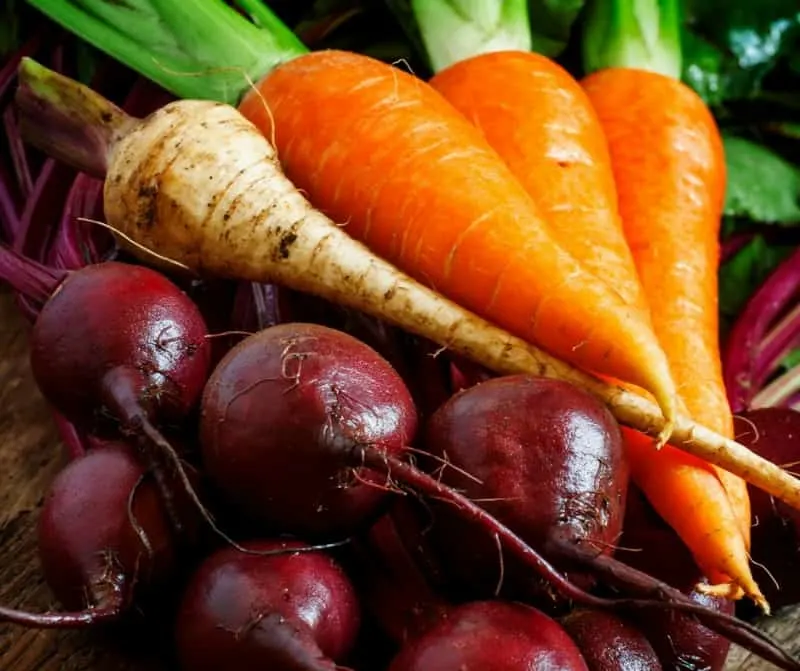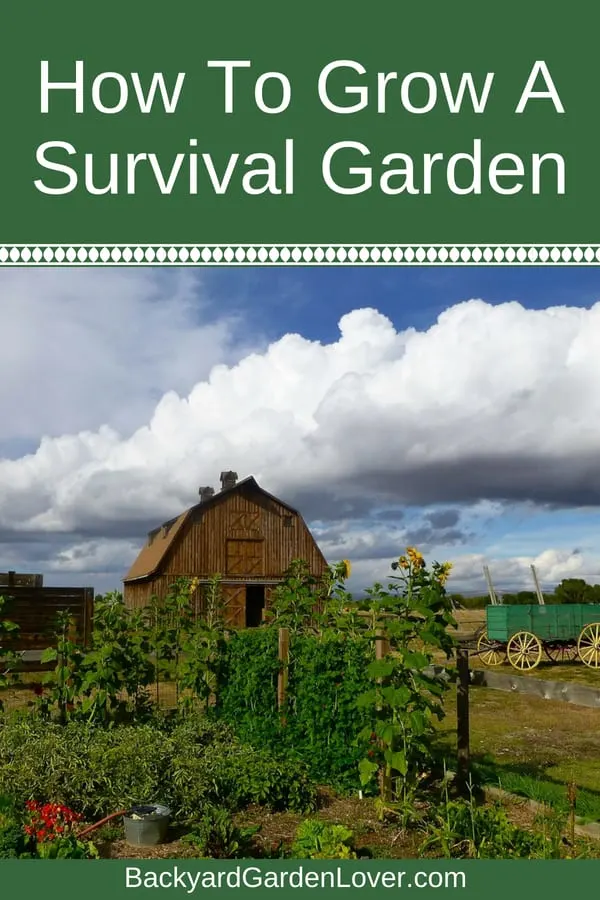You want to be able to feed your family no matter what… But can you? You sure can: regardless where you live if you know how to grow a survival garden you’ll be able to sleep better at night, knowing your family will have food.

Whether it’s a small balcony garden in a NYC apartment, or a big open space on your own farmland, you can easily become a survival gardener.
What is a Survival Garden?
Preppers Garden Handbook: Seedsaving, Food Production, and Prepping Your Garden for Survival (Practical Preppers) Survival gardening is not the usual garden many are planting, but rather gardening for sustenance. If suddenly you were not able to go down to your local grocery store and buy whatever you wanted, what would your family eat?
Survival gardening is not the usual garden many are planting, but rather gardening for sustenance. If suddenly you were not able to go down to your local grocery store and buy whatever you wanted, what would your family eat?
When you garden for survival you need to be able o provide for your family in times of natural calamities of extreme times. Survival gardening need to be planned for differently: think of well rounded nutrients, calories and long term storage.
A survival garden will use every square inch you have on your plot to grow food you can store for year-round use. Many of the plants in your survival garden should be perennials that will give you food year after year without fail.
Think of berries of all kinds, fruit trees, asparagus, rhubarb, fennel and others.
You can change your front yard into edible landscaping: not only beautiful, but also useful.
How To Grow A Survival Garden
Basic survival garden guide
- First, know the soil you are working with. Certain climates are better for certain types of gardening than others. Know what you’re working with so you know how to plant and what to plant in your survival garden.
- Choose your location. The location for your survival garden is very important. It needs to be a place that gets a lot of sunlight (at least six hours a day) and that also has good drainage. You want it to have access to water as well, so you will need either an irrigation system, or the ability to connect a hose for watering.
- Get some seeds. You might see “survival garden seed packets” and some people like these for keeping it simple. However, you don’t have to use kits or seed packets.
- Get back to nature. To understand how survival gardens work, you need to know how plants work in nature. They don’t grow in rows and they won’t need to be weeded, cultivated, or otherwise treated. To have a successful survival garden, you will want to try to mimic how they grow naturally as much as possible. This includes knowing how they grow to get adequate water, sun and air, and to experience natural pest control.
- Plant the seeds deep and properly and then you will see your harvest year after year, for many years to come.
Let’s take a look at the types of plants and veggies you can put in your survival garden.
Survival Gardening Vegetables and Plants
Here are some of the best vegetables to grow for survival: some are hardy, some are perennials, some have medicinal uses. Most can be easily preserved for later use, either by freezing, canning or drying.
- Basil
- Beans
- Beets
- Berries
- Broccoli
- Cabbages
- Carrots
- Chamomile
- Corn
- Eggplants
- Lavender
- Peanuts
- Peas
- Peppermint
- Potatoes
- Squash
- Sweet potatoes
- Tomatoes
Now that you know more about survival gardening vegetables, you can get started right away. Fall is the perfect time of the year for some of these survival garden plants.
If you’re new to gardening, or just new to a survival garden, you’ll be on track in no time. Think of survival gardening like going back to the way your ancestors used to do it. We’re talking about the way people used to garden when there were no fancy tools, pesticides, or websites to teach us how to do it.

Adriana Copaceanu is a passionate nature lover living in the country on her dream property where she grows vegetables, lavender, and wildflowers that she shares with the wildlife they attract. When she's not in the garden, she loves spending time with her chickens and planning her next nature project. Check out her books below:
How to Grow Lavender for Fun and Profit: Lessons Learned from Planting Three Hundred Lavender Plants



The Best Survival Garden Plants
Thursday 25th of July 2019
[…] – A great choice for your survival garden is beans or other legumes such as lentils and peas. They are high in protein, very nutritious, and […]
Jae
Saturday 3rd of November 2018
Is there a follow up post on how plants work in nature? You mention it t, but we need more detail. Maybe break it into different posts. Thanks
ILoveGardening
Saturday 3rd of November 2018
Jae, in that paragraph there's a link to a book on Amazon that describes it ;)
Must Have Garden Tools And Accessories For Small Gardens | Backyard Garden Lover
Thursday 28th of December 2017
[…] of frustration in the long run. Any experienced gardener will tell you how much easier it is to grow your own fruits and vegetables if you have the right tools and accessories in your […]
Beginner Vegetable Garden | Backyard Garden Lover
Thursday 21st of December 2017
[…] of starting a vegetable garden? That’s a great idea! Growing your own food is not only rewarding, but it also has lots of health benefits. A beginner vegetable garden is thew […]